by Heather Plett | Feb 10, 2014 | Creativity, growth, mandala, Uncategorized
Today, the doors open once again for Mandala Discovery: 30 Days of Mandala Journaling. Sign up now and you’ll receive a prompt every day for 30 days during the month of March.
This course is changing people’s lives. Nearly 200 people have been through the course since it opened in September 2013, and I have heard remarkable stories of how it has impacted people in positive ways. (Some of their testimonials are on the sales page.)
In honour of registration opening once again, below is a sample prompt. In case you’re curious, but do not quite understand what the course is all about, this will give you a sense of what you’d receive every day.
Each day is based on a different theme related to personal growth. This sample prompt is based on the them of “roots”.
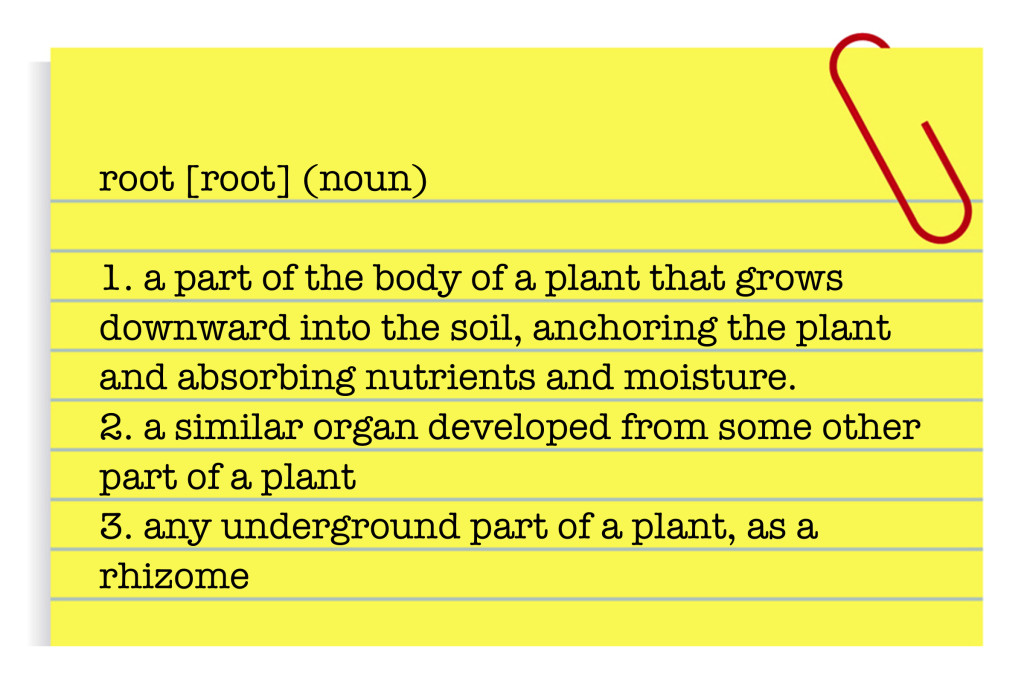
Where Your Roots Grow
A couple of years ago, I had the privilege of participating in a healing circle for people who’d been impacted by residential schools in our country. This is a tragic chapter of Canada’s history in which Aboriginal children were taken from their families and placed in boarding schools where they were denied their own cultural practices and language, and many were physically and emotionally abused.
A few of the people in the circle had been students at residential schools, but more of them had been raised by parents who were forced to attend residential schools. And then there were those of us who didn’t have residential schools in our blood line, but knew that we were impacted nonetheless, because our community members were impacted and because we were raised as white Canadians with a colonial history. Some of our ancestors undoubtedly shared in the guilt of this injustice.
As we listened to the stories shared around the circle, it was clear that all of us carried both the wounds and the wounding of our ancestors. It was especially apparent in those who’d been raised with parents who’d been in residential schools. Some of them spoke of alcoholism, family abuse, cultural neglect, and other stories that clearly left deep wounds in their collective psyche.
Whatever our roots are – whether we were raised in a lineage of oppressed or oppressors, religious or agnostic, poverty or wealth – we all carry the stories of our ancestors with us.
Our roots reach much deeper into the soil of our family’s past than we ever fully understand. We are impacted by the history that happened in our bloodline long before we were conceived and born into this world.
Bethany Webster talks about the importance of healing the mother wound. “The mother wound is the pain of being a woman passed down through generations of women in patriarchal cultures. And it includes the dysfunctional coping mechanisms that are used to process that pain.” The mother wound manifests itself in our lives as shame, comparison, the feeling that we need to stay small, allowing ourselves to be mistreated by others, and self-sabotage. If we do not heal it, she says, we continue to pass this wound down through the generations.
We must also consider the ways in which patriarchy has men. As Richard Rohr says, “After 20 years of working with men on retreats and rites of passage, in spiritual direction, and even in prison, it has sadly become clear to me how trapped the typical Western male feels. He is trapped inside, with almost no inner universe of deep meaning to heal him or guide him.” Men have to come to terms with their own wounds and often have little support to find healing for them.
These stories that we carry from our past – that we are not worthy, that we need to stay small, that we are not allowed to show emotion, that our cultures don’t have as much value as that of our colonizers, or that we are not allowed to do anything that goes against our religion for fear of hell – they are the soil in which our roots grow. If that soil is not fertile and nurturing, our growth is impaired and we never reach our full potential.
Imagine, though, that through an alchemical process, these stories can be healed and transformed and can become the fertile soil we need for healthy growth. Imagine that they can provide rich fertilizer to feed our roots and make our branches grow and our fruit to be plump and sweet.
We can transform these stories. They do not need to keep us small. They do not need to hold us back from what we can become.
Through much inner work – whether that looks like therapy, journaling, dance, meditation, mandala-making, or any other form of self-discovery and healing – we can cultivate those stories and stir them like a compost heap until they become the richest of fertilizer. This is not easy work, and it is not short-term work, but it is necessary work. The world needs us to heal and the world needs us to grow strong and true.
After reading the article by Bethany Webster, about the need to heal the Mother Wound, I wrote a letter to my mom. She died last year, so she won’t read it on this earth, but I still felt like there were some things I needed to say to her. I acknowledged the way that she had been wounded (by losing her mother when she was six, for example) and forgave her for the way that those wounds were passed on to me. I thanked her for the love she poured on me and my siblings despite the deep wounds she carried. Writing the letter felt significant – like I had begun to heal something for both myself and for her. There is more work to do, but every step toward healing is a step in the right direction.
Consider what Charles Eisenstein says about how our healing can contribute to the world’s healing (in “The More Beautiful World Our Hearts Know is Possible”):
“When I see how my friend R. has, in the face of near-impossible odds, so profoundly healed from being abused as a child, I think, ‘If she can heal, it means that millions like her can too; and her healing smooths the path for them.’
“Sometimes I take it even a step further. One time at a men’s retreat one of the participants showed us burn scars on his penis, the result of cigarette burns administered by a foster parent when he was five years old to punish him. The man was going through a powerful process of release and forgiveness. In a flash, I perceived that his reason for being here on Earth was to receive and heal from this wound, as an act of world-changing service to us all. I said to him, ‘J., if you accomplish nothing else this lifetime but to heal from this, you will have done the world a great service.’ The truth of that was palpable to all present.”
Eisenstein goes on to talk about scientific research into “morphic resonance” in nature – the concept that once something happens somewhere, it induces the same thing to happen elsewhere. Some substances, for example, are reliably liquid for many years until suddenly, around the world, they begin to crystallize. It is not clear why it happens, when these substance are not in contact with each other or exposed to the same environment, but it seems that a change to one begins to result in changes to others. In the same way, he says, the healing of one person can lead to the healing of others, even if those people never meet.
Transforming your stories into rich soil so that you can grow strong is necessary not only for you, but for the world.
Your Roots Mandala
Imagine you are a tree, firmly rooted in the stories of your past. Some of these stories are conscious for you (memories from childhood) and some are less conscious but you are impacted by them nonetheless.
Begin by drawing a large circle. In the centre of the circle, draw a small circle that represents the trunk of a tree. Reaching out from that trunk into the fertile soil around it, draw the roots of that tree. (Imagine you are looking down on the tree from above and can only see that part of the tree that is underground, not the branches or leaves.)
 Between the roots, write down stories that are part of your past. Start with the stories that you know have impacted you and your growth in both positive and negative ways. Your religious upbringing, your father’s temper, your mother’s insecurity, your grandmother’s way of making you feel special, your birth order, your childhood abuse, etc. Do not censor yourself – if a story shows up, there’s a good chance it had an impact on you whether or not you recognize it. (There is no right or wrong way to do this – your stories are your own and you know what matters to you.)
Between the roots, write down stories that are part of your past. Start with the stories that you know have impacted you and your growth in both positive and negative ways. Your religious upbringing, your father’s temper, your mother’s insecurity, your grandmother’s way of making you feel special, your birth order, your childhood abuse, etc. Do not censor yourself – if a story shows up, there’s a good chance it had an impact on you whether or not you recognize it. (There is no right or wrong way to do this – your stories are your own and you know what matters to you.)
Reach further back. What are the stories that impacted your lineage before you were born? Your family’s displacement from the country they called home, your grandmother’s abusive marriage, your ancestors’ connection to colonialism or oppression, your grandfather’s death when your mother was small.
Write them all down. Some of them may bring up pain, and some may bring up positive memories. Some may have a clear impact on your life, and some you may not fully understand until a much later date. They are all part of your narrative and they are all part of the soil in which your roots dig for nourishment.
With a black pencil crayon, shade over the stories you have written, imagining that all of them are now becoming part of the compost that helps you grow. Whether good or bad, those stories are your soil.
Note: This exercise may bring up a lot of mixed emotions for you. It may feel like a little bit of healing, or it may feel like you’ve opened a wound that is still raw. That’s all part of the healing process. Sit with whatever comes up and do not try to suppress it. If you need to, do some further journaling to explore what came up, or find someone you trust that you can talk to about this.
You can find a downloadable pdf of this lesson here.
Did you find this useful? Consider signing up for the March 2014 offering of Mandala Discovery: 30 Days of Mandala Journaling. You’ll get 30 more like this.
by Heather Plett | Feb 6, 2014 | Beauty, circle, Creativity, Uncategorized
 I see more and more women (and some men) who are finding their way back to the things they love to do – painting, dancing, writing, hosting, horseback riding, hiking, taking pictures, acting, etc.
I see more and more women (and some men) who are finding their way back to the things they love to do – painting, dancing, writing, hosting, horseback riding, hiking, taking pictures, acting, etc.
I work with a lot of these people, in my coaching and workshop facilitation, and I love to see the delight in their eyes when they talk about what they truly love to do. Some, for example, sit in my Creative Writing for Self-discovery circle and talk about how writing poetry feels like a homecoming – like something they’ve been longing for but didn’t know they were missing. Others start playing with mandalas and can’t believe how much joy it brings them to hold pencil crayons in their hands again.
Almost always, though, I see that delight in their eyes fade when I ask them “why don’t you do more of it?” They stammer a reply that sounds remarkably similar to all of the other excuses I’ve heard (I’m too busy, it makes me feel guilty, my partner makes fun of me, I can’t take the time away from my kids, etc.). And when they come back a week later, they sheepishly say “I wanted to do the homework, but couldn’t find the time.”
The bottom line is that they have been fed a lie that what they love to do is trivial. It’s the thing you do only if you have time after all of the important things are done. It’s just a hobby, so shouldn’t be taken as seriously as washing the dishes or crunching numbers at the accounting office you work at.
I have struggled with this lie in my own work too. Sure I teach transformational workshops online and off, but it’s not really that important, is it? It’s just stuff people do on the fringes of their lives – it doesn’t fit in the “mainstream” where people are doing real work. Even though I believe in it deeply and know it can transform people and communities, I have trouble marketing my work in the corporate world, because… well… won’t people make fun of me for trying to sell something so trivial in a serious environment?
Mandala journaling? That’s fine for people with time on their hands, but don’t try to get a serious corporate executive to colour in a circle. It’s far too trivial for someone with an important job title. Gathering in circle? Oh that’s just for women who aren’t doing the big, important work in the world. It’s not going to fly in places where people are having tough conversations and changing the world.
But it’s all a lie, and I know that. It’s the lie the patriarchy has been telling us for hundreds of years to keep us silent and to keep us from changing the accepted structures and heirarchy. It’s a lie we’ve been fed again and again, since childhood, and we don’t know how to change it because we’ve received so many wounds over it, we’ve learned to hide our hearts and keep our deepest loves secret.
Imagine if we could rise out of the shame and the fear and truly believe in what we love to do.
Imagine if we could convince governments to move their chairs into circles and have real conversations instead of the polarizing shouting they do at each other from across the room. Imagine if business meetings started with some quiet journaling or mandala-making. Imagine if there was daily dancing in the corporate offices downtown. Imagine if the heads of corporations and governments had to go on vision quests or self-discovery retreats before they could be trusted to lead.
It’s hard to imagine, isn’t it? Your first thought, like mine, was probably “oh, it would never work”. But what if every time we heard that voice of resistance in ourselves, we recognized it as the voice of the patriarchy trying to silence us, and we challenged it instead of accepting it?
A few weeks ago, I co-facilitated a weekend stakeholder consultation for a national association of city planners. Because we knew it would be a difficult conversation, we encouraged them to use circle to ensure that everyone was heard. There was some reluctance to our recommendation, but fortunately we had an ally on the planning committee, and so we went ahead with it. The circle transformed the way they gathered. People made positive contributions throughout the weekend because they felt heard. Important decisions were made AND people felt valued and hopeful.
The circle is NOT too trivial for people who are making important business decisions. In fact, I think it’s imperative.
A few years ago, I was facilitating a team planning retreat for a non-profit, and I invited everyone to start with some simple yoga poses, and then we played with modeling clay and tried to envision our future through clay. Halfway through, one of the people in the room said, “but when are we going to do the real work?” He was anxious to get to the strategic planning we needed to do. I didn’t say much, but when we were finished, we looked at each other’s clay creations and saw a great deal of vision for where the team needed to move. “Oh, I get it,” said the person who had resisted. “This IS the real work.” Yes, it is. We saw more vision emerge from the pieces of clay than we would have in a traditional brainstorming session.
Art-making and yoga are NOT too trivial for people doing world-changing work. In fact, I think it’s imperative.
It’s taken me years to stop believing the lie (and it still creeps in now and then), but I believe that the world is crying out for us to do this work. It’s transformational for EVERYONE, not just the people with time on their hands after the real work is done.
It starts by changing us individually, and with that as a base, it can change governments, change international relationships, change the way we treat our earth, and change our communities.
I believe it’s imperative. The world needs this kind of change. And it will have to start with a healing of our collective wound and a new belief that this is worthy work we are doing.
If you are on the path to the work you love, or you want to step onto that path, consider a journey through Pathfinder.
If you want to practice openhearted writing, consider joining a small, intimate virtual circle on Friday, February 14th.
by Heather Plett | Feb 3, 2014 | circle, Uncategorized, writing
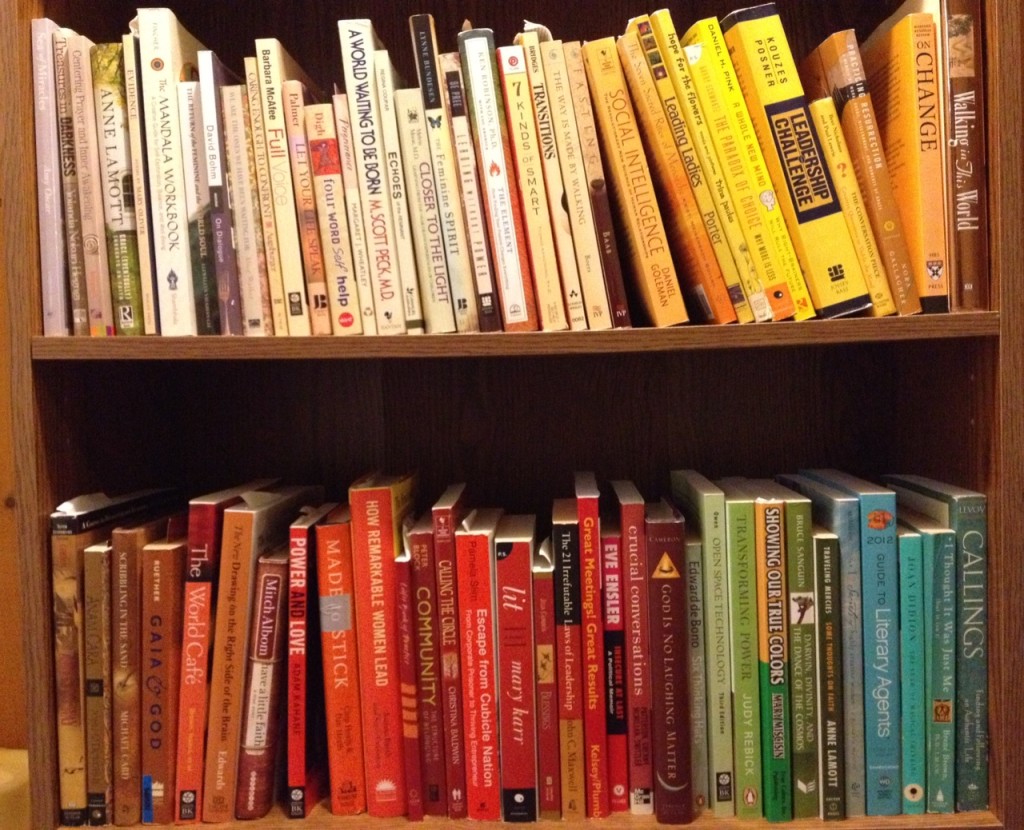 When I am in pain, I turn to books. When I am lost, I turn to books. When I am confused, need to feel less alone, long to be inspired, need help with relationships, or want to change the world or myself, I turn to books.
When I am in pain, I turn to books. When I am lost, I turn to books. When I am confused, need to feel less alone, long to be inspired, need help with relationships, or want to change the world or myself, I turn to books.
I turn to books. A lot.
Yes, I also seek support from my community – my family and dearest friends – and I do a lot of journalling, wandering, praying, and art-making, but almost always, when there is a gap in my life, I first look for books (or blog posts, articles, song lyrics – anything that’s well written) that will help me understand something deeper about myself and the world I live in.
Good writing cracks my heart wide open. It changes my perspective. It opens me to new possibilities. It challenges me to be a better person. Sometimes it frightens me. And sometimes it makes me weep. But it always leaves me wiser and more openhearted than before.
When I was lost and losing my faith and wanted to know that my confusion was human and that there was a different way of experiencing God than the way I’d grown up believing, Anne Lamott’s courageous, vulnerable, and breathtaking words let me know that it was okay to lie broken on the floor, and trust that God would be down there on the floor with me.
“Hope is not about proving anything. It’s about choosing to believe this one thing, that love is bigger than any grim, bleak shit anyone can throw at us.” – Anne Lamott
When I was in a difficult place, facing the fear of conflict and yet knowing that I, as a non-profit manager, needed to address the difficult things that my team was facing instead of hiding and pretending it wasn’t there, I hung Ranier Maria Rilke’s words on my wall.
“Perhaps all the dragons in our lives are princesses who are only waiting to see us act, just once, with beauty and courage. Perhaps everything that frightens us is, in its deepest essence, something helpless that wants our love.” – Rainer Maria Rilke
When I was preparing to travel to Ethiopia, where I knew I would see the kind of intense poverty and injustice that would tear my heart apart, I turned to Viktor Frankl.
“For the first time in my life I saw the truth as it is set into song by so many poets, proclaimed as the final wisdom by so many thinkers. The truth – that Love is the ultimate and highest goal to which man can aspire. Then I grasped the meaning of the greatest secret that human poetry and human thought and belief have to impart: The salvation of man is through love and in love.” – Viktor Frankl
When I longed to follow my dreams, and not simply follow the accepted path that would make the least waves, I clung to Mary Oliver’s words.
“You do not have to be good.
You do not have to walk on your knees
for a hundred miles through the desert, repenting.
You only have to let the soft animal of your body
love what it loves.” – Mary Oliver
When my inner wild woman kept whispering in my ear, Clarrisa Pinkola Estes helped me recognize her.
“If you have yet to be called an incorrigible, defiant woman, don’t worry, there is still time.” – Clarissa Pinkola Estés
When I longed to understand myself better so that I could understand others, David Whyte served as a guide.
“Making room for our own fears, we suddenly have room for the fears of others. Once we have renounced the need to live without suffering, to be special, to be exempt from the losses and doubts that have afflicted all people since the beginning of time, we can see the difficulties of others without being afraid ourselves. Our fearful, disappointed surface face starts to fall away. We can welcome other people into our lives because no matter their fears, they do not make us afraid. Suffering is the natural cyclical visitation that comes from being alive.” – David Whyte
When I couldn’t understand why my journey was often so difficult while others seemed to have much easier paths, Parker Palmer saved me.
“Most of us arrive at a sense of self and vocation only after a long journey through alien lands. But this journey bears no resemblance to the trouble-free “travel packages” sold by the tourism industry. It is more akin to the ancient tradition of pilgrimage – a transformative journey to a sacred centre’ full of hardships, darkness, and peril.” Parker Palmer
When I was lost in grief over the deaths of my mother, father, and son, C.S. Lewis shared his own story and left me feeling less alone.
“Grief … gives life a permanently provisional feeling. It doesn’t seem worth starting anything. I can’t settle down. I yawn, I fidget, I smoke too much. Up till this I always had too little time. Now there is nothing but time. Almost pure time, empty successiveness.” – C.S. Lewis
When I tried to follow my passion, but faced fear and resistance, Steven Pressfield held my hand and coaxed me forward.
“Remember our rule of thumb: The more scared we are of a work or calling, the more sure we can be that we have to do it.” – Steven Pressfield
When I needed to learn how to trust again, Martyn Joseph’s songs were my companions.
“So turn me tender again Fold me into you Turn me tender again And mould me to new Faith lost its promise And bruised me deep blue Turn me tender again Through union with you”– Martyn Joseph
When my creative heart called me forward into a deeper and deeper journey, John O’Donohue was there beside me.
“The call to the creative life is a call to dignity, to a life of vulnerability and adventure and the call to a life that exquisite excitement and indeed ecstasy will often visit.” – John O’Donohue
When chaos terrified me and I didn’t know how I would lead my team forward, Margaret Wheatley calmed my nerves.
“Change always involves a dark night when everything falls apart. Yet if this period of dissolution is used to create new meaning, then chaos ends and new order emerges.” – Margaret Wheatley
When I looked around me and saw only flawed paradigms for leadership, Christina Baldwin was my guide to a new way of seeing.
“As much as we may think we know about the nature of being human, the circle knows more. The circle is a form that has been able to withstand the imperfections of human interaction and survive tremendous social shifts. I believe this on both experience and faith: experience, because I have been in circles at moments of searing vulnerability and high confrontation and the circles have held me; faith, because the circle once held human society together for over thirty thousand years.” – Christina Baldwin
When I recognized that part of my calling was to help people build community, Peter Block showed me how.
“Leadership is about rearranging the chairs, getting the questions right, putting citizens in front of each other and then knowing what’s worth focusing on. The leadership I’m longing for is the leadership that says my number one job is to bring people together out of exile, out of isolation, and into connection.” – Peter Block
These writers and so many more have kept me company in my darkest days and inspired me in my brightest days. I owe them a deep, deep gratitude for the many ways in which they have touched my life.
All of my life, I have strived to be the kind of openhearted writer that these writers have been. It has been my daily practice to put my words onto the page in vulnerable, truth-seeking ways. Sometimes I share those words, and sometimes I keep them close to my heart… but always I write. Always.
One of the greatest blessings of my life has been the many, many times that someone has left a comment on my blog, sent me an email, or phoned to tell me “your words touched/changed/challenged/enlightened/inspired me.” When I share with an open heart – whether that heart is broken in the grief of the death of my mother, cowering in fear over challenges that feel too big for me, stumbling through the daily struggle of life, or in awe of the grace that appears out of nowhere – people respond.
Open hearts touch other open hearts.
Out of my own practice of openhearted writing has emerged a new offering. I want to invite you into a small, intimate online circle where we will spend a day practicing and learning about openhearted writing.
Won’t you join me on February 14th in opening our hearts to what wants to be written? Your words may not leave the pages of your own journal, but even if you are the only person who is changed, the practice is worth every moment you spend on it.
by Heather Plett | Jan 29, 2014 | Uncategorized
A few days ago, Tara Mohr shared this post on Facebook, asking people whether or not they agreed with the critique of “do what you love, love what you do”. The article suggests “the problem with DWYL is that it leads not to salvation but to the devaluation of actual work—and more importantly, the dehumanization of the vast majority of labourers.” It goes on to say that it is only the privileged few who can do what they love, and it is almost always at the expense of hundreds of other people contributing less enjoyable labour so that a few people can remain in their privilege (e.g. Steve Jobs did what he loved, but could only do so with the support of thousands of employees, janitors, food service providers, etc.)
I admit, this article causes some inner tension for me. My response is both “bravo” and “wait a minute…”.
There is part of me that says a big “Yes!” to the article. Yes, let’s be aware of our privilege and our sense of entitlement that we should be allowed to do what we love. Yes, let’s recognize the labour of those who provide food, clothes, and clean hospital floors for us. Yes, let’s realize that the marginalized single mother scraping together a meagre income on three part time jobs has never been afforded the kind of privilege that a “do what you love” mentality suggests. Yes, let’s examine the complexities of a world in which the colour of your skin, your gender, your sexual orientation, your mobility, the country you live in, the government that makes decisions for you, or a hundred other things could be the deciding factor whether or not you ever have an opportunity to “do what you love”. Yes. Let’s be honest and not be arrogant and entitled.
And then there’s the part of me that says “but wait…” I’m a coach and retreat facilitator. I work with many of those privileged (and some less privileged) who find themselves able to make decisions that lead in the direction of their heart’s work, and I ADVISE them to seek the path that love calls them toward. I’ve even written a book to support that quest. AND I was able to quit a perfectly good job myself in pursuit of more of what I love to do (recognizing, of course, my privilege in the fact that I had a savings account and income-earning husband that allowed me to do so).
How can I now say that doing what we love is not a worthwhile pursuit and we should abandon it in order to honour work of all kind? I can’t. I believe that our passions and our love were given to us for a reason. I believe that those of us who find a way to follow that love are making important contributions to the world because of it. I believe that I am better able to serve the world if I use my giftedness and follow my passions than if I do the kind of work that doesn’t make use of my gifts and doesn’t allow me to share my love.
But… let’s go back to the flip side… There’s another belief that sometimes conflicts with the “do what you love and love what you do” mentality. I believe in community. I believe that we are meant to serve each other and sometimes that means making sacrifices and doing hard things for the good of the whole. I believe in the hard work and sacrifice of Mother Teresa and Nelson Mandela and I don’t believe they always “did what they loved and loved what they did”.
I can’t help but think about Elizabeth, a woman I met in the remotest part of Ethiopia. At the age of 23, this remarkable young woman was running a water diversion project that would eventually give a community access to fresh water to grow crops in the desert. As a young woman leading a crew of 80 skilled labourers (all men) and hundreds of unskilled labourers, she faced prejudice, isolation, and a great deal of loneliness. It took a lot of courage and commitment to stay where she was and see this project to completion. Although she was using her leadership and engineering gifts, there probably weren’t many days when she loved what she was doing. And yet she did it, and today a community has beautiful lush gardens because of it.
And that brings me to my greatest concern with the “do what you love” mantra. It is too “me-centric”. It is the product of a society that is increasingly separating us from each other, turning us into consumers rather than citizens, and making us believe that the pursuit of our own happiness trumps the happiness of the collective. This doesn’t work. The more separated we are and the more self-centred we become, the less we rely on community and the less we make healthy decisions that serve our world and not just ourselves. This is why we end up with greedy economic systems where 1% of the population owns 40% of the wealth. This is why we destroy our ecosystems and overlook slave labour – because we feel entitled to consume the things we love and focus on ourselves instead of the good of the whole.
“The new Story of the People, then, is a Story of Interbeing, of reunion. In its personal expression, it proclaims our deep interdependency on other beings, not only for the sake of surviving but also even to exist. It knows that my being is more for your being. In its collective expression, the new story says the same thing about humanity’s role on Earth and relationship to the rest of nature. It is this story that unites us across so many areas of activism and healing. The more we act from it, the better able we are to create a world that reflects it. The more we act from Separation, the more we helplessly create more of that, too.” – Charles Eisenstein, The More Beautiful World Our Hearts Know is Possible
I would like to suggest an alternative to the “do what you love” mantra, and it is this…
Do it for love.
Take “you” out of the picture, and focus on the collective picture of love. Once you do that, then the balance comes back into the picture. You can still follow your passion and believe that those passions contribute to a better world, but now you are doing it not for yourself, but because you believe in the collective good.
When you do it for love, you can show up as the most kind and respectful janitor at the hospital, because you are serving the people around you.
When you do it for love, you can quit your soul-sucking job, move out of the city and grow an eco-friendly garden in your little patch of paradise.
When you do it for love, you can own a big business and let yourself get excited about the financial success of it while treating the people who support you in that business with respect and compassion.
When you do it for love, you can move out to the remotest part of Ethiopia and oversee a water diversion project and find strength in your love for the people and the land.
When you do it for love, you can spend 27 years in jail and emerge with forgiveness for your captors and go on to lead your country into a new political paradigm.
When you do it for love, you can make art passionately and believe that you are helping to create a better world.
When you do it for love, you can survive those three part time jobs (or work yourself to exhaustion on a farm like my father did) because you believe that your family is worth it.
Do it for love. Do it for the world.
Maybe then we’ll find that “more beautiful world our hearts know is possible.”
If you want to do it for love, let me help you find your path.
by Heather Plett | Jan 22, 2014 | Uncategorized
I am very excited about this and hope that many, many people will dive into its pages, dig into the juicy journal prompts and creative exercises, and find their way to the places where their hearts want to take them. Buy your copy here.
Preparing for this launch, I asked a number of people I love and respect for their brief stories about finding their paths. Here’s what I asked them:
Who or what helped you find your path to the work of your heart?
I LOVE the stories I gathered! They are unique, beautiful and wise. Just as you’ll discover when you work your way through Pathfinder, no two people have the same story or the same path.
If their stories inspire you, feel free to add your own stories in the comments. Or write your story on your blog and I’ll add the link to the bottom of this post.
Tess Marshall, courage coach, author, blogger and teacher, Michigan
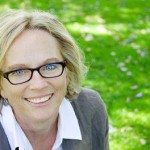 I was 25 and a young mother of four daughters ages 7, 5, 3 and 3. A young priest at the church we attended took personal interest in me. He convinced me to attend a nearby college when the twins went to kindergarten. I was AFRAID. He took me, signed me up for 2 classes: speed reading and how to study. I graduated nine years later. In two more years I had a master’s degree in counseling psychology. Life-changing.
I was 25 and a young mother of four daughters ages 7, 5, 3 and 3. A young priest at the church we attended took personal interest in me. He convinced me to attend a nearby college when the twins went to kindergarten. I was AFRAID. He took me, signed me up for 2 classes: speed reading and how to study. I graduated nine years later. In two more years I had a master’s degree in counseling psychology. Life-changing.
Alana Sheeren, writer & intuitive coach, California
 My daughter who made me want to deal with my demons so she didn’t have to inherit them. My son, whose stillbirth wiped the slate clean and began the journey of tying the loose ends of my life back together. The incredible women, like Heather, who crossed my path both virtually and in real life, whose love and support kept pointing me back to my true self. And through it all, listening to and trusting that deep inner wisdom kept me believing I’d find my way, even I was stumbling in the dark.
My daughter who made me want to deal with my demons so she didn’t have to inherit them. My son, whose stillbirth wiped the slate clean and began the journey of tying the loose ends of my life back together. The incredible women, like Heather, who crossed my path both virtually and in real life, whose love and support kept pointing me back to my true self. And through it all, listening to and trusting that deep inner wisdom kept me believing I’d find my way, even I was stumbling in the dark.
Christine Claire Reed, spontaneous dance maker and guide, Pennsylvania
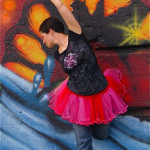 Death. Finding my way back to dance and back to my essential self, finding my way back to LIFE after decades of debilitating depression and anxiety came through the lessons of death. My partner and I had a few years when death was a constant companion, and rather than shrink from that, we learned to embrace it and to live more fully because of it. I do not know where I would be now if I had not learned that death is just another necessary and beautiful part of life.
Death. Finding my way back to dance and back to my essential self, finding my way back to LIFE after decades of debilitating depression and anxiety came through the lessons of death. My partner and I had a few years when death was a constant companion, and rather than shrink from that, we learned to embrace it and to live more fully because of it. I do not know where I would be now if I had not learned that death is just another necessary and beautiful part of life.
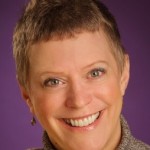
Mary Anne Radmacher, author, artist, actionista, Washington
Reading Hugh Prather’s HOW TO LIVE IN THE WORLD AND STILL BE HAPPY was a “line in the sand” turning point in my young life. We are now familiar that a single Chinese character represents both “crisis” and “opportunity.” That which felt tragic in the moment I was experiencing it – turned out to be key to turning me to my true life’s path.
Christina Baldwin, author & teacher, Washington
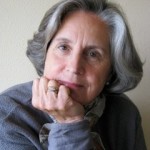 One thing that helped me find the path to the work of my heart is my own journal. There is a circular nature to the act of writing something down and through reading what I’m writing informing myself of my own desires… Countless times over the years, the pen has slipped out truth before my waiting gaze and I have been startled, surprised, delighted, or shocked at what I have just revealed to myself. The inner teacher is a sly one! In a life so richly full of people, I have enjoyed again and again the surprises springing forth from this most subtle inner source.
One thing that helped me find the path to the work of my heart is my own journal. There is a circular nature to the act of writing something down and through reading what I’m writing informing myself of my own desires… Countless times over the years, the pen has slipped out truth before my waiting gaze and I have been startled, surprised, delighted, or shocked at what I have just revealed to myself. The inner teacher is a sly one! In a life so richly full of people, I have enjoyed again and again the surprises springing forth from this most subtle inner source.
Amy Tingle, writer, artist, typewriter poet, New Jersey
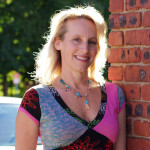 The first dip into finding my heart’s work was quite literal, dipping my toes into Squam Lake during the inaugural Squam Art Workshops in 2008. I met so many women that weekend who were in the process of searching for, or who had already found, the heart of their passion. Taking art classes with great teachers like Judy Wise and Misty Mawn, and writing with Jen Lee and eventually, with Maya Rachel Stein, led me to begin teaching again myself. I started BraveGirlsArt, offering art and self-empowerment classes for girls and women in New Jersey, and more recently Maya and I embarked on a new adventure together with our mobile creativity business, Food for the Soul Train. Art and writing are no longer pursuits I daydream about, but integral pieces of my daily life. That first dip in Squam Lake was freezing, but I knew immediately that I could swim. -Amy Tingle, Food for the Soul Train
The first dip into finding my heart’s work was quite literal, dipping my toes into Squam Lake during the inaugural Squam Art Workshops in 2008. I met so many women that weekend who were in the process of searching for, or who had already found, the heart of their passion. Taking art classes with great teachers like Judy Wise and Misty Mawn, and writing with Jen Lee and eventually, with Maya Rachel Stein, led me to begin teaching again myself. I started BraveGirlsArt, offering art and self-empowerment classes for girls and women in New Jersey, and more recently Maya and I embarked on a new adventure together with our mobile creativity business, Food for the Soul Train. Art and writing are no longer pursuits I daydream about, but integral pieces of my daily life. That first dip in Squam Lake was freezing, but I knew immediately that I could swim. -Amy Tingle, Food for the Soul Train
Rachelle Mee-Chapman, spiritual director specializing in “care for creative souls, Washington
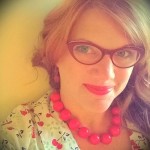 What helped me find my path to my heart’s work? Art. I often say that when church failed me, art saved me. To me the creative process is an act faith, and to view the artwork of others is a connection to the divine. I was especially guided by the letters of Vincent VanGogh — another former preacher converted to the church of art. Now I help people connect the dots between spiritual development and creative expression. As an ordained minister, I never thought a museum would become my cathedral, but I’m grateful that it has.
What helped me find my path to my heart’s work? Art. I often say that when church failed me, art saved me. To me the creative process is an act faith, and to view the artwork of others is a connection to the divine. I was especially guided by the letters of Vincent VanGogh — another former preacher converted to the church of art. Now I help people connect the dots between spiritual development and creative expression. As an ordained minister, I never thought a museum would become my cathedral, but I’m grateful that it has.
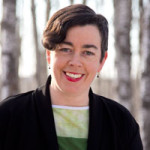
Beth Sanders, conversation host and city planner, Alberta
Being a bit of an explorer has opened my life to my heart. When I went to university, and took my first job, I didn’t know what I was getting into; I just knew there was something there for me and I set out to explore what called to me, even if I didn’t understand why. As I look back, the path seems clear and I now understand that when I explore, the path finds me.
Kara LC Jones, creative grief coach and teacher, Washington
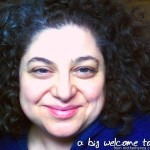 As odd as it may sound, my three dead sons helped me find my path to comfort with groundlessness. Prior to their lives/deaths, I wanted a fixed path; to know what I was meant to do; to feel I could accomplish or clearly show what I was doing in my life and work. But their deaths pulled all path from under my feet. I had to face the chaos of groundlessness and make peace with the path being no path. I do what I do. I treasure the moment — or lament, celebrate, curse, or dance it. I aim for things sometimes, but I know the path branches in dimensions I can’t even fathom. The aim is aimless. The purpose wanders. The path is no path, *and* being okay with that groundlessness every moment.
As odd as it may sound, my three dead sons helped me find my path to comfort with groundlessness. Prior to their lives/deaths, I wanted a fixed path; to know what I was meant to do; to feel I could accomplish or clearly show what I was doing in my life and work. But their deaths pulled all path from under my feet. I had to face the chaos of groundlessness and make peace with the path being no path. I do what I do. I treasure the moment — or lament, celebrate, curse, or dance it. I aim for things sometimes, but I know the path branches in dimensions I can’t even fathom. The aim is aimless. The purpose wanders. The path is no path, *and* being okay with that groundlessness every moment.
Tuesday Ryan-Hart, host/facilitator, community builder, Ohio
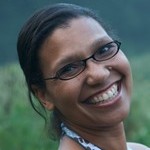 While I have been supported and loved into the work of my heart by many kind friends and family, I would say that I have always been led by my own internal compass. If I can get quiet enough to listen, I will always find my own “true north” and then those same friends and family give me the courage to follow where that leads. My path – finding it, walking it, blazing it if I have to – is always located at the intersection of myself and my beloveds, the personal and the collective, the known and unknown.
While I have been supported and loved into the work of my heart by many kind friends and family, I would say that I have always been led by my own internal compass. If I can get quiet enough to listen, I will always find my own “true north” and then those same friends and family give me the courage to follow where that leads. My path – finding it, walking it, blazing it if I have to – is always located at the intersection of myself and my beloveds, the personal and the collective, the known and unknown.
Mary Alice Arthur, story activist and conversation host, New Zealand and other places
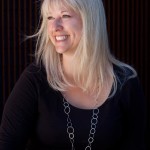 I learn by travelling and being in new places, different cultures and groups has challenged my perspective and taught me to take a broader view. I’ve been blessed to meet many friends of the heart who have helped me to see my own guts more clearly. But the outward journey has to be mirrored by the inner one. I’ve learned as much or more through the prompting of my spirit and the longing of my soul. Always it calls to me to be still a moment and listen. That isn’t easy! In a world where”doing” has become paramount I look again and again to those who are profoundly “being”, and who, in following their hearts are a beacon to others. I hope I can be one of those. May you be one, too!
I learn by travelling and being in new places, different cultures and groups has challenged my perspective and taught me to take a broader view. I’ve been blessed to meet many friends of the heart who have helped me to see my own guts more clearly. But the outward journey has to be mirrored by the inner one. I’ve learned as much or more through the prompting of my spirit and the longing of my soul. Always it calls to me to be still a moment and listen. That isn’t easy! In a world where”doing” has become paramount I look again and again to those who are profoundly “being”, and who, in following their hearts are a beacon to others. I hope I can be one of those. May you be one, too!
Terri Belford, writer, teacher, muse, California
 The greatest wisdom about finding my true path came to me at a point when I began to feel like a dilettante because I was on my third business and once again feeling called to do something new. I literally was walking up a trail in the woods and heard a whisper asking “What if I have more than one life purpose? What if I’m not meant to stay on a single path?” At that moment I gave myself permission to remain open to unplanned twists and “stopovers” on the journey. Now, rather than judging myself as fickle, I honor my different callings and I’m guided by the question, “How will this make a difference?”
The greatest wisdom about finding my true path came to me at a point when I began to feel like a dilettante because I was on my third business and once again feeling called to do something new. I literally was walking up a trail in the woods and heard a whisper asking “What if I have more than one life purpose? What if I’m not meant to stay on a single path?” At that moment I gave myself permission to remain open to unplanned twists and “stopovers” on the journey. Now, rather than judging myself as fickle, I honor my different callings and I’m guided by the question, “How will this make a difference?”
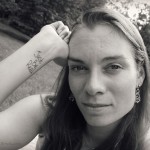
Lisa Wilson, artist, writer, mindfulness teacher, Indiana
Stillness. Because beyond all of the paths that were offered by others, all of the shoulds and the rights and wrongs…beyond it all was my heart, keeping rhythm for my breath. I simply need to listen, again and again, to remember who I already am.
Connie Zhuwarara, human rights lawyer, Zimbabwe
Being able to finally listen to that inner voice that tells you there is a better way of doing things more authentically. The yearning that never goes away and later the joy and peace that follows when you make the decision to finally listen to that inner strong desire for change. The grace that thrives when you know that although the work you are doing is important, there is a whole new world out there not known by many. It requires you to walk on the edge to discover new ways of living, working and being. It dawn on me, that mere existence was not an option anymore.
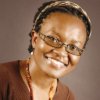
Walking the path to the work of my heart was like stepping in front of the train track. It was faith, then magic happened and everything started happening in slow motion. Then the chips started falling in place, slowly one by one. I was pointed to the right people to guide me to let me know that many have walked this path before me. I came across various tools that have lead me to this path; mandala’s, women in circle. Slowly like a baby learning to walk, I stumble, but get up knowing that I am on the right path. I allowed myself to talk to the women that have walked the path before me. Two particular women have had such a big influence in my life. One introduced me to the new way of doing things. I did not hesitate. I walked to the door and the other I called on. She told me, I was an edge walker. She told me, that the truth was within – she was going to hold my hand and guide me to reach my truth. Am slowly, but surely, picking up the pebbles of my truth. Am walking the edgy path. This path comes with it Grace, gratitude and courage. Sometimes it’s lonely but that path is worth walking.
Maya Stein, ninja poet, writing guide, and creative adventuress, New Jersey
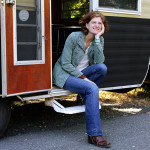 I had great role models in my parents. They’ve lived a very creative life, pursuing activities and ideas and places they felt passionate about. They always carved out time and space for themselves – together and separately – and I was always aware that their interests and pursuits were a necessary part of our family life, even if I wouldn’t have known to articulate exactly why. But I understand, now, that their personal pursuits defined them just as much as parenting did. And this has taught me a lot about identity, about the importance of carving space and time for that amid the other roles and responsibilities of daily life. It’s so easy to lose sight of our personal identities, or even the investigation of what makes us tick inside – it’s probably the first thing that gets sacrificed because we can get so overloaded by what’s being demanded of us – but I think it’s ultimately a huge loss, not just for ourselves, but for others who might look to us for inspiration and guidance. I feel that when we let our passionate selves slip away, the best part of us is gone. And so I make decisions – not always simple or easy ones – on behalf of that “best part.” I want her around for a long time.
I had great role models in my parents. They’ve lived a very creative life, pursuing activities and ideas and places they felt passionate about. They always carved out time and space for themselves – together and separately – and I was always aware that their interests and pursuits were a necessary part of our family life, even if I wouldn’t have known to articulate exactly why. But I understand, now, that their personal pursuits defined them just as much as parenting did. And this has taught me a lot about identity, about the importance of carving space and time for that amid the other roles and responsibilities of daily life. It’s so easy to lose sight of our personal identities, or even the investigation of what makes us tick inside – it’s probably the first thing that gets sacrificed because we can get so overloaded by what’s being demanded of us – but I think it’s ultimately a huge loss, not just for ourselves, but for others who might look to us for inspiration and guidance. I feel that when we let our passionate selves slip away, the best part of us is gone. And so I make decisions – not always simple or easy ones – on behalf of that “best part.” I want her around for a long time.
Jodi Crane, play therapist and professor, Texas
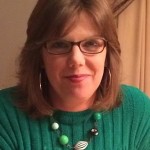 My parents, teachers, and mentors have influenced me through lessons learned via their teaching and modeling. And some steps on my path I didn’t have control over. For instance, only one school accepted both my husband and I for further graduate work. Thus, we moved from Texas to Iowa. My path has been most fulfilling when it includes elements of what I loved to play as a child: house, school, writing stories, and making crafts. In the end, my path has been one of self-exploration and increasing self-awareness, knowing above all else, I must trust myself.
My parents, teachers, and mentors have influenced me through lessons learned via their teaching and modeling. And some steps on my path I didn’t have control over. For instance, only one school accepted both my husband and I for further graduate work. Thus, we moved from Texas to Iowa. My path has been most fulfilling when it includes elements of what I loved to play as a child: house, school, writing stories, and making crafts. In the end, my path has been one of self-exploration and increasing self-awareness, knowing above all else, I must trust myself.
Cigdem Kobu, writer, teacher and business coach, New Jersey
 I’ve had many truly great guides and teachers, but I think my intuitive and daring inner self, whenever I remember to notice and listen to her voice, has been the one who helped me the most because she urged me to keep going and encouraged me to take risk, experiment and learn continuously.
I’ve had many truly great guides and teachers, but I think my intuitive and daring inner self, whenever I remember to notice and listen to her voice, has been the one who helped me the most because she urged me to keep going and encouraged me to take risk, experiment and learn continuously.
I believe each of us has her own inner wise self who knows all the answers, who has all the guidance, and who can show the way if we let her.
Joseph Campbell said, “Life has no meaning. Each of us has meaning and we bring it to life. It is a waste to be asking the question when you are the answer.”
I trust that the meaning I search for – as well as the work of my heart – comes from within myself in my commitment to do the work in spite of my fears, doubts and trepidations. It is the practice that sheds light on the path.
Oftentimes people want to know the meaning first – before they feel they can rise to act. But I think it happens the other way around. Meaning comes from practice. You feel drawn to do something. You feel called to do some type of work. You accept the challenge with an open mind, you take the first step, you experiment, you create, you serve. And all the time, you remain observant. Then you change, transform, shift, redefine, course-correct as the need arises. And then you do it again.
Laurie Foley, brand strategist and coach, Georgia
 As much as I dislike the experience, uncertainty has always been the most profound teacher for me as I seek my path. Call me stubborn but I seem to require being dissolved into total surrender in order to discover the path that really matters. One of the best parts of getting older is that I can now shake my fist at the challenges of uncertainty while knowing deep down that growth and alignment will come in due time. Journaling is my best tool for allowing fist-shaking and anticipation to co-exist.
As much as I dislike the experience, uncertainty has always been the most profound teacher for me as I seek my path. Call me stubborn but I seem to require being dissolved into total surrender in order to discover the path that really matters. One of the best parts of getting older is that I can now shake my fist at the challenges of uncertainty while knowing deep down that growth and alignment will come in due time. Journaling is my best tool for allowing fist-shaking and anticipation to co-exist.
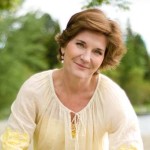
Jennifer Louden, author & teacher, Washington
A persistent tug, push, psychic shove that has always arose in me to create (something! anything!) and to help others (it can be better, really!) is what ushers me along the path of my work. I won’t say that following this path is easy nor is the path very clear but so what? I will continue to listen and follow. Knowing others are doing the same helps immensely.
Barbara Winter, self-employed gypsy teacher & writer, California
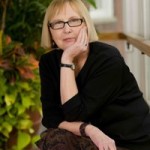 I spent a decade zigzagging around and wondering why I couldn’t find my calling like my archaeologist sister had when she was a kid. After three unhappy attempts at “good jobs”, I met a wise man who kept reminding me that the biggest influences in our lives are the people you meet and the books that you read. Although I wasn’t sure where to find those positive influences, one evening I read a little article in the local paper about two women who had started a business from their apartment in New York. Best of all, they’d written a book about their adventures called Supergirls: Autobiography of an Outrageous Business. I dashed to the bookstore the next day, bought their only copy and had a new world open up before my eyes. I must have read it 5 or 6 times in a row. Within a few months, I headed out on my first adventure in self-employment.
I spent a decade zigzagging around and wondering why I couldn’t find my calling like my archaeologist sister had when she was a kid. After three unhappy attempts at “good jobs”, I met a wise man who kept reminding me that the biggest influences in our lives are the people you meet and the books that you read. Although I wasn’t sure where to find those positive influences, one evening I read a little article in the local paper about two women who had started a business from their apartment in New York. Best of all, they’d written a book about their adventures called Supergirls: Autobiography of an Outrageous Business. I dashed to the bookstore the next day, bought their only copy and had a new world open up before my eyes. I must have read it 5 or 6 times in a row. Within a few months, I headed out on my first adventure in self-employment.
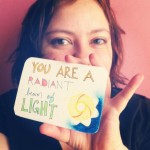
Andrea Shroeder, dream incubator & muse for creative magic, Manitoba
Joseph Campbell said that where you stumble, that’s where your treasure lies. When I look back on the path that has led me to where I am now, doing the work of my heart as my full time gig, I see my stumbles as my greatest teachers. Learning how to be ok with the struggle and to find the gifts in the darkness and what ultimately helped me to develop the courage to believe in myself enough to go after what I really wanted.

Miki’ala DeVivo, lifestyle photographer and family history chronicler, Arizona
I used to think that the answer to “what am I supposed to do with my life” was out there somewhere. I took all the courses and read all the books. Turns out the answer was with me all along, but in a place I’d never thought to look before. (Click here for a longer post by Miki’ala on the subject on her blog.)
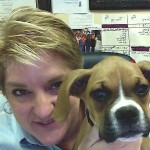
Martha Atkins, PhD, master certified coach, licensed professional counsellor, Texas
Dr. Hooker, my psychology professor and advisor at Southwestern University was the key player. He started me down a path that led toward pediatric hospital work, then death and dying work. A WWII survivor, he practiced and lived unconditional positive regard. As an 19 year old college student, Dr. Hooker changed the course of my life.

Connie Hozvicka, artist, writer, yogini, Arizona
My paintbrush has always been my trusty ol’ compass in navigating my path. Simply the act of painting has helped me become comfortable with taking risks, lessen my fear of failure, and most of all tap into my innate wisdom. If it wasn’t for my paintbrush, I wouldn’t have the courage to paint a life that is true to my spirit and to find work that stems directly from my heart . (Click here for a longer version of Connie’s story on her blog.)
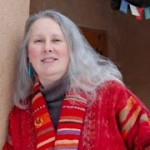 Mahala Mazerov, meditation teacher, New Mexico
Mahala Mazerov, meditation teacher, New Mexico
I was born connected. A mystic. As I think we all are. The vital challenge is not to lose our heart connection as we move from the inner richness of childhood into adulthood. And, in particular, not to divide our heart from our work in the world.
David Harkins, business advisor, facilitator, speaker, teacher,
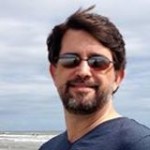 The work of my heart, my passion, is to build and create new things. It takes different forms, from painting and writing, to creating products and building businesses. I am grateful for my parents for giving me the tools and encouragement to begin, and thankful for a string of employers who have enabled me to continue to explore and support my passion.
The work of my heart, my passion, is to build and create new things. It takes different forms, from painting and writing, to creating products and building businesses. I am grateful for my parents for giving me the tools and encouragement to begin, and thankful for a string of employers who have enabled me to continue to explore and support my passion.
Are you looking for your path? Pathfinder can help!
Want to share your own story of who our what helped you find your path? Add it in the comments, or write a blog post and leave the link in the comments.
 Between the roots, write down stories that are part of your past. Start with the stories that you know have impacted you and your growth in both positive and negative ways. Your religious upbringing, your father’s temper, your mother’s insecurity, your grandmother’s way of making you feel special, your birth order, your childhood abuse, etc. Do not censor yourself – if a story shows up, there’s a good chance it had an impact on you whether or not you recognize it. (There is no right or wrong way to do this – your stories are your own and you know what matters to you.)
Between the roots, write down stories that are part of your past. Start with the stories that you know have impacted you and your growth in both positive and negative ways. Your religious upbringing, your father’s temper, your mother’s insecurity, your grandmother’s way of making you feel special, your birth order, your childhood abuse, etc. Do not censor yourself – if a story shows up, there’s a good chance it had an impact on you whether or not you recognize it. (There is no right or wrong way to do this – your stories are your own and you know what matters to you.)














 I learn by travelling and being in new places, different cultures and groups has challenged my perspective and taught me to take a broader view. I’ve been blessed to meet many friends of the heart who have helped me to see my own guts more clearly. But the outward journey has to be mirrored by the inner one. I’ve learned as much or more through the prompting of my spirit and the longing of my soul. Always it calls to me to be still a moment and listen. That isn’t easy! In a world where”doing” has become paramount I look again and again to those who are profoundly “being”, and who, in following their hearts are a beacon to others. I hope I can be one of those. May you be one, too!
I learn by travelling and being in new places, different cultures and groups has challenged my perspective and taught me to take a broader view. I’ve been blessed to meet many friends of the heart who have helped me to see my own guts more clearly. But the outward journey has to be mirrored by the inner one. I’ve learned as much or more through the prompting of my spirit and the longing of my soul. Always it calls to me to be still a moment and listen. That isn’t easy! In a world where”doing” has become paramount I look again and again to those who are profoundly “being”, and who, in following their hearts are a beacon to others. I hope I can be one of those. May you be one, too!













